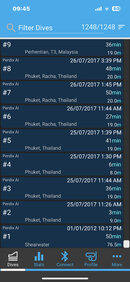CWK
Contributor
I have a Padi Self Reliant certification and my course was taught by a Padi CD. Two open water dives in which I led and navigated, but with the instructor following me around. Assigned tasks included navigating back to a specified point, deploying the pony, inflating the smb and getting back on the boat with 50 bar in the tank.
I also have a SDI solo certification taught by a SDI instructor who is also a TDI Tech Instructor Trainer. Two solo dives in which I had to keep above a specified bottom and maintain specified depths, navigate to specified landmarks and photograph them for proof of having navigated correctly, inflate my smb at a specified dive time and at a specified location, which was observed by the instructor on land. I wasn’t asked to deploy my pony. I presume that this was because the instructor was previously my TDI AN/DP instructor and was well aware that I could deploy a pony.
In my opinion the SDI training is far better than Padi.
I also have a SDI solo certification taught by a SDI instructor who is also a TDI Tech Instructor Trainer. Two solo dives in which I had to keep above a specified bottom and maintain specified depths, navigate to specified landmarks and photograph them for proof of having navigated correctly, inflate my smb at a specified dive time and at a specified location, which was observed by the instructor on land. I wasn’t asked to deploy my pony. I presume that this was because the instructor was previously my TDI AN/DP instructor and was well aware that I could deploy a pony.
In my opinion the SDI training is far better than Padi.




